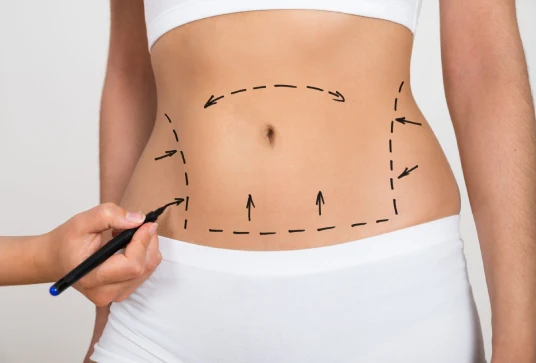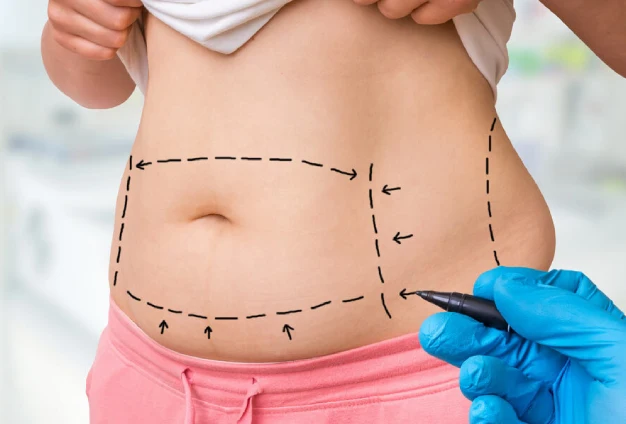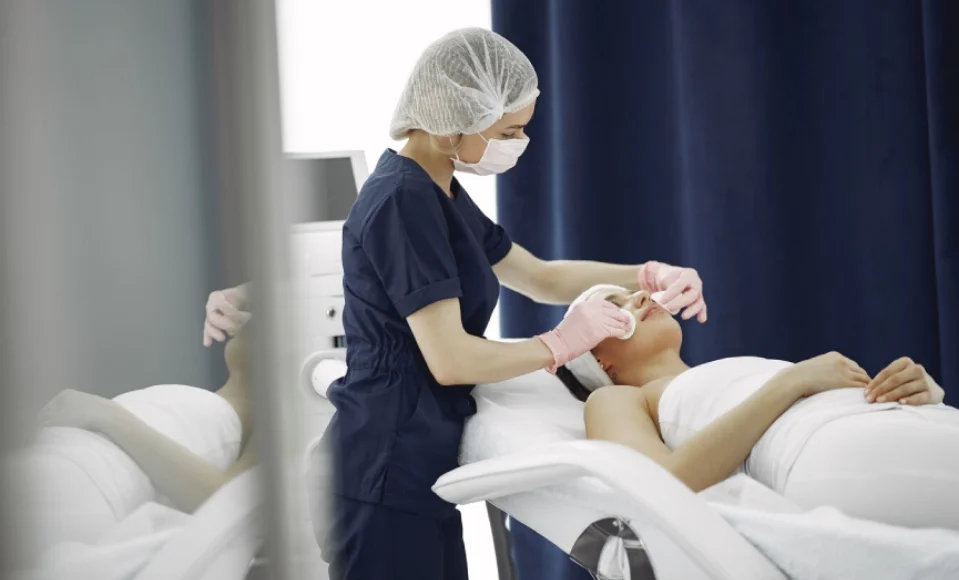
Tummy
The size and shape of our bodies are given more consideration in today’s figure-conscious society. We thus aim to the best of our abilities to use food and exercise to regulate any physical changes that may occur in this regard.
Achieving a “flat tummy” might be somewhat challenging for certain individuals due to the combination of muscular laxity and localized fat deposits in the abdominal region. For women, this becomes much more challenging if after pregnancy they get strained and loose skin. Of course, the kids are worth every inconvenience.
Have a Realistic Approach
Technically, abdominalplasties can be done with varying degrees of success, but there are a few caveats. First, the outcome won’t be as good as it would be if you were to reach your target weight by 10%. Secondly, other secondary procedures—like liposuction—may be needed, or you might need to lose more weight in order to have an even better outcome.
In these cases, an abdominoplasty is typically done to simply remove the visibly loose, hanging skin, which is incompatible with even the strictest diets and exercise regimens. The idea is that this will serve as a kind of motivator for you to continue reducing your weight. As was already said, there are several ways to perform an abdominoplasty. Your skin quality, the existence of stretch marks, the looseness of your muscles, and the quantity and distribution of fat will all play a role in the decision.
Am I suitable for Abdominoplasty?
- Generally speaking, women who intend to get pregnant soon should wait to have the procedure until after their family is complete.
- Even with the use of surgical measures or modifications to current techniques, including expanding the incision and liposuction, heavier patients will not be satisfied with the final outcome.
- This is due to the fact that severe weight gain will still result in noticeable fullness in the buttocks, upper, and middle abdomen, as well as the flanks.
- Moreover, a significant amount of fat is typically located within our internal organs, deep beneath the abdominal muscles, in overweight people.
- Surgery is not an option for this fat; the only ways to lose weight are through diet and exercise.
- In these cases, surgery does not result in a flat stomach. Men and women who are within a few pounds (i.e., 10%) of their optimum weight are the best candidates to prevent this disappointment and to reduce the necessity for a secondary treatment.
Preparing for Tummy Tuck
- Only after a thorough inspection and consultation can a final decision be made. Generally speaking, though, you will probably need a complete abdominoplasty if you have extra skin and loose muscle in both the upper and lower abdomen regions along with just small amounts of fat deposits.
- A “mini tuck” might be done, nevertheless, if your loose skin is mostly in your lower abdomen and you have good skin and muscle tone above the umbilicus with little to no extra fat.
- On the other hand, if there is some minor excess fat in the upper abdomen along with this.
- To get a better effect, liposuction might be used in addition to the “mini tuck.” Since the scar is still roughly 10 inches long and cannot be considered really “mini,” it would be reasonable to argue that the label “mini tuck” is actually misleading.
- Always remember to be honest while expressing your expectations throughout the consultation. You can choose the procedure that is best for you together with Dr. Chandni Jain Gupta, who will also be honest with you.



